Hoverboards have become one of the most exciting and innovative ways to move around — whether for commuting, fun, or adventure. From LED-lit models with Bluetooth speakers to rugged, all-terrain versions, there’s a hoverboard out there for every type of rider. But with so many options, how do you choose a hoverboard that fits your needs?
This comprehensive guide breaks down everything you need to know about choosing the perfect hoverboard — from types and features to safety standards and ground compatibility. Whether you’re a first-time buyer or upgrading your ride, this guide is your roadmap to a smart and confident purchase.
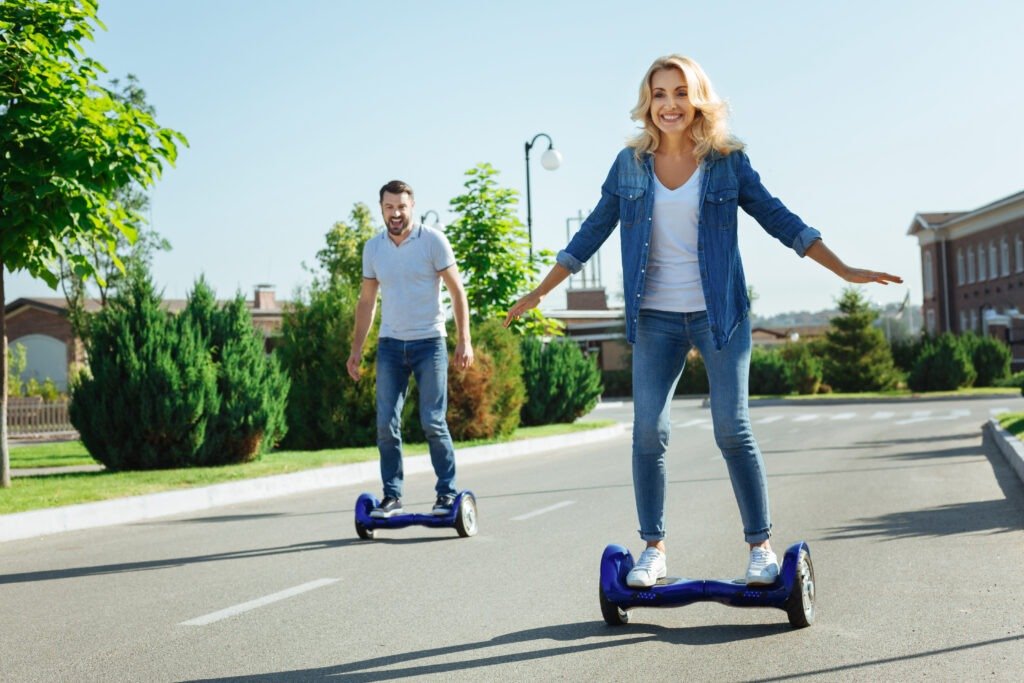
What Types of Hoverboards Are Available and Which One Is Right for Me?
Hoverboards may all look similar at first glance, but they can differ greatly in their design, performance, and intended use. Understanding the various types is the first step toward finding your ideal ride.
Self-Balancing Hoverboards vs. Other Scooter Types
Self-balancing hoverboards are the most common type — two-wheeled hoverboards with internal gyroscopes that help you balance automatically. These are ideal for beginners and casual users who want an intuitive learning curve and a compact design.
Compared to traditional electric scooters or one-wheel models, self-balancing hoverboards are more fun-focused and less suitable for high-speed commuting or rough grounds. They’re perfect for cruising around the neighborhood, urban areas, or indoor settings.
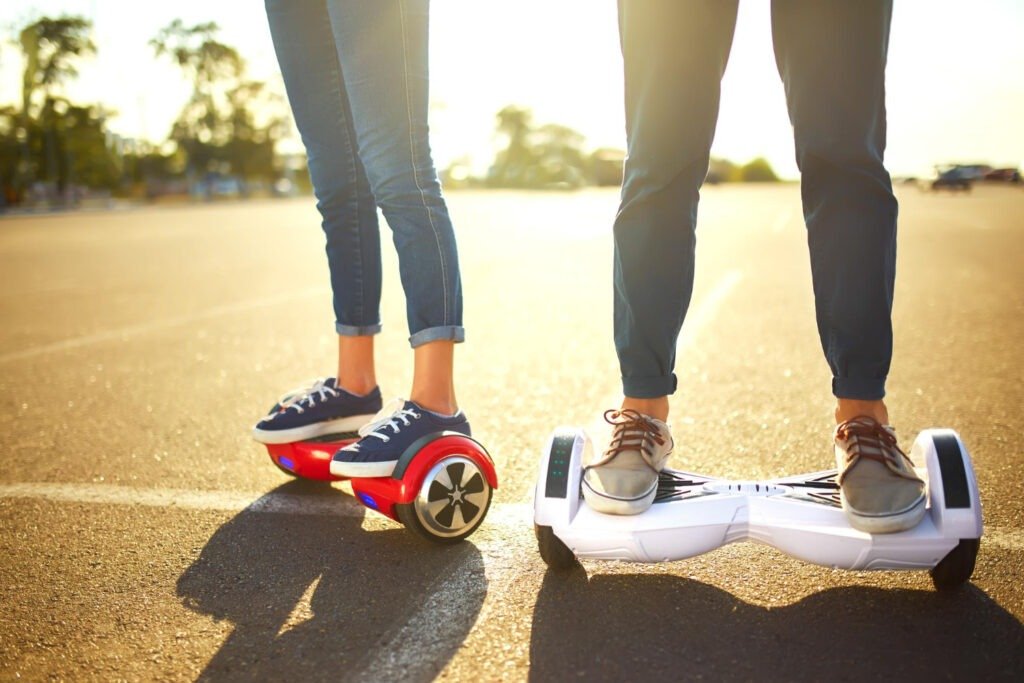
All-Terrain Hoverboards for Adventurous Riders
All-terrain hoverboards are built for riders who want more than smooth pavements. Equipped with larger, rugged wheels (usually 8.5” or bigger), these hoverboards offer better suspension, stronger motors, and water resistance. Whether you’re rolling over grass, gravel, or dirt paths, these are the go-to models for off-road fun.
Look for all-terrain hoverboards with robust casing, IP ratings for water/dust resistance, and enhanced battery power for longer outdoor use.
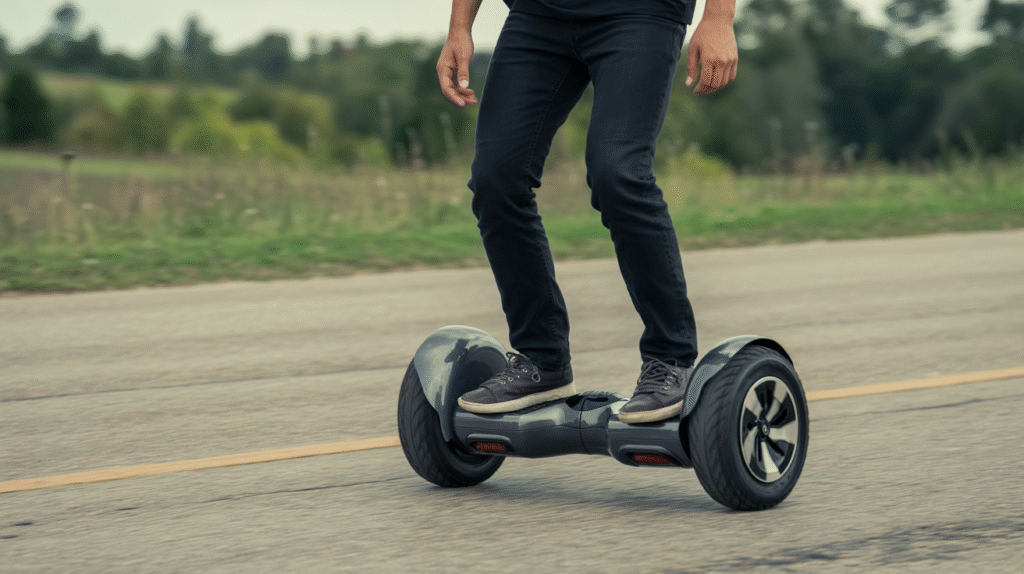
Finding the Perfect Hoverboard for Kids and Adults
Hoverboards come in various sizes and power levels. Models for kids typically have smaller wheels (6.5”), lower max speeds (6–8 mph), and a lighter weight limit. They often feature fun lights and simple controls.
Adult hoverboards, on the other hand, are designed for higher performance. They can handle higher speeds (up to 10–12 mph), support greater rider weights (up to 265 lbs), and include advanced features like Bluetooth speakers or mobile app integration. Choose based on the rider’s age, weight, and intended use.
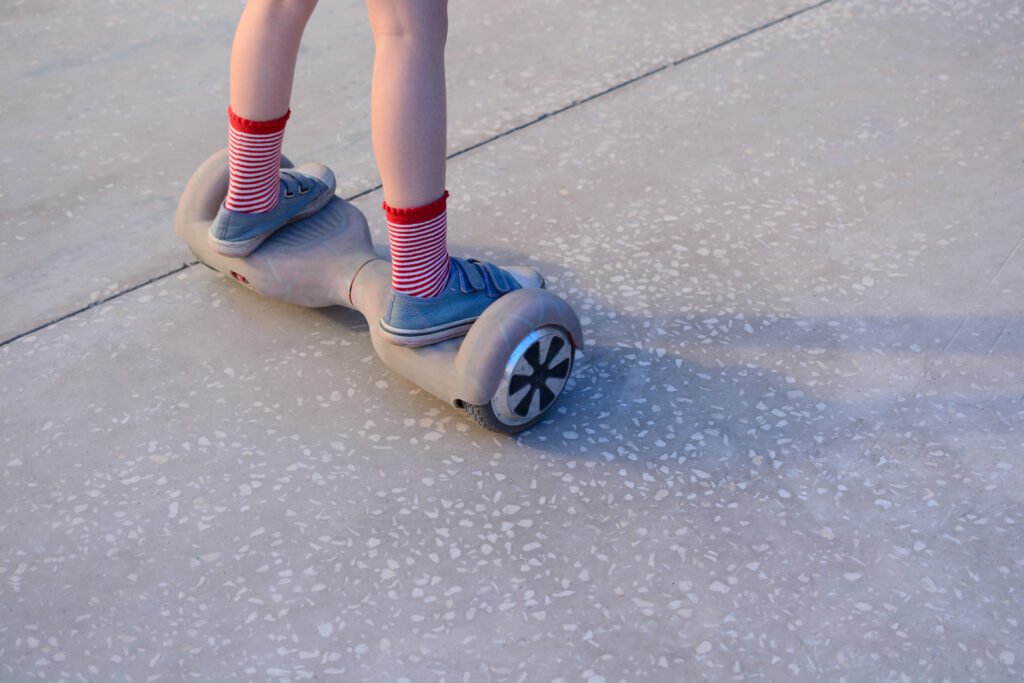
Hoverboards with Knee Bars or Handlebars: Extra Stability for New or Nervous Riders
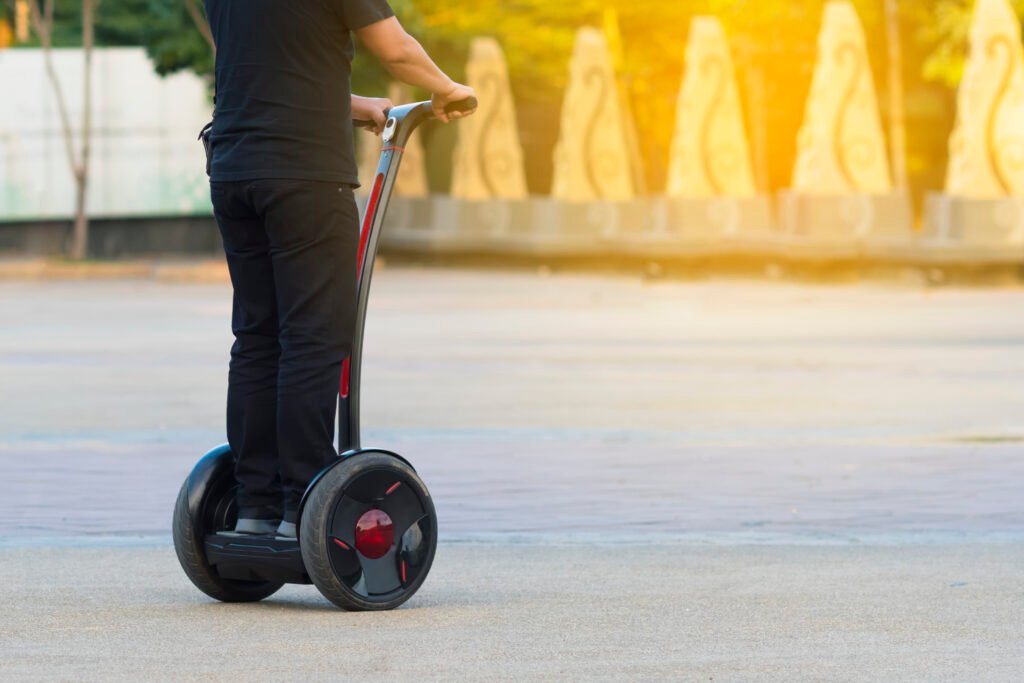
While traditional hoverboards rely solely on foot pressure and balance, some models come with a knee bar (also called a control bar) or a handlebar for added stability and easier control. These features are especially helpful for:
- Beginners who are still learning to balance
- Older riders or people with limited mobility
- Riders looking for a more upright, Segway-like experience
Knee-bar hoverboards are controlled by slight movements of the knees or thighs, offering more precise control than foot-only models. Handlebar models, often considered hybrids between hoverboards and scooters, give a familiar upright handle for steering, making them more intuitive.
These variants tend to be larger and pricier, but they’re ideal if comfort and control are more important than compactness or tricks.
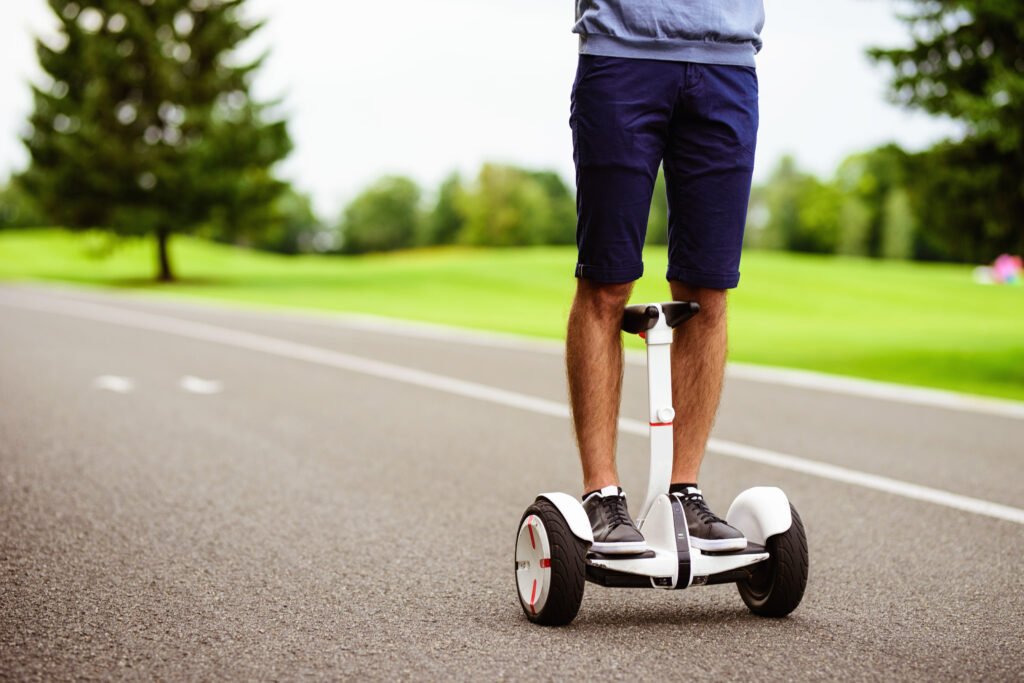
What Key Factors Should I Consider When Choosing the Right Hoverboard?
Once you’ve identified the general type of hoverboard you need, it’s time to dive into the specific specs that will make or break your experience.
Weight Limit and Rider Compatibility
Each board has a recommended weight range. Exceeding the limit may strain the motor, reduce performance, and pose a safety risk.
- Kids’ models: 44–130 lbs
- Standard models: 44–220 lbs
- Heavy-duty models: Up to 265 lbs
Always check the weight specs before buying. Also, consider portability — if you’ll need to carry the board often, choose a lighter model (around 20–25 lbs).
Battery Life and Miles Per Charge
Hoverboard battery performance varies by model. Entry-level boards may last 7–10 miles per charge, while premium models can offer up to 15 miles or more.
Look for:
- Battery type: High-quality lithium-ion batteries last longer and charge faster.
- Charging time: Ranges from 2 to 5 hours.
- Smart charging protection: Prevents overheating or overcharging.
If you plan to ride long distances or daily, prioritize battery life and durability.
Top Speed and Motor Power for Different Riding Experiences
Hoverboards typically offer top speeds between 6 and 12 mph. Kids’ models tend to stay on the lower end for safety. Adult and off-road versions go faster thanks to stronger motors (up to 800–1000W).
More motor power also means better hill-climbing ability and smoother performance over uneven surface. If you live in a hilly area, aim for a dual-motor setup or one with higher wattage.
Hoverboard Safety
Hoverboard safety is non-negotiable. While early models once gained a bad reputation, modern boards are much safer — but only if you choose wisely.
UL Safety Standards and Certifications to Look For
Always make sure your board is UL 2272 certified. This certification confirms that the hoverboard meets strict electrical and fire-safety standards.
Avoid cheap, non-certified products from unknown brands — they may save money upfront but pose serious risks.
Build Quality and Durability Features
A well-constructed hoverboard will handle wear and tear better and last longer. Look for:
- Solid shell materials (ABS plastic or aluminum)
- Water and dust resistance (IP54 or higher)
- Reinforced fenders and frames
Some models also come with bumper guards to protect against minor collisions.
Non-Slip Foot Pads and Other Safety Elements
Non-slip foot pads offer better grip and control while riding. This is especially important in wet or dusty conditions.
Other safety features include:
- LED headlights: For visibility at night
- Battery indicators: To avoid power loss mid-ride
- Speed warnings: Audible or app-based alerts when exceeding limits
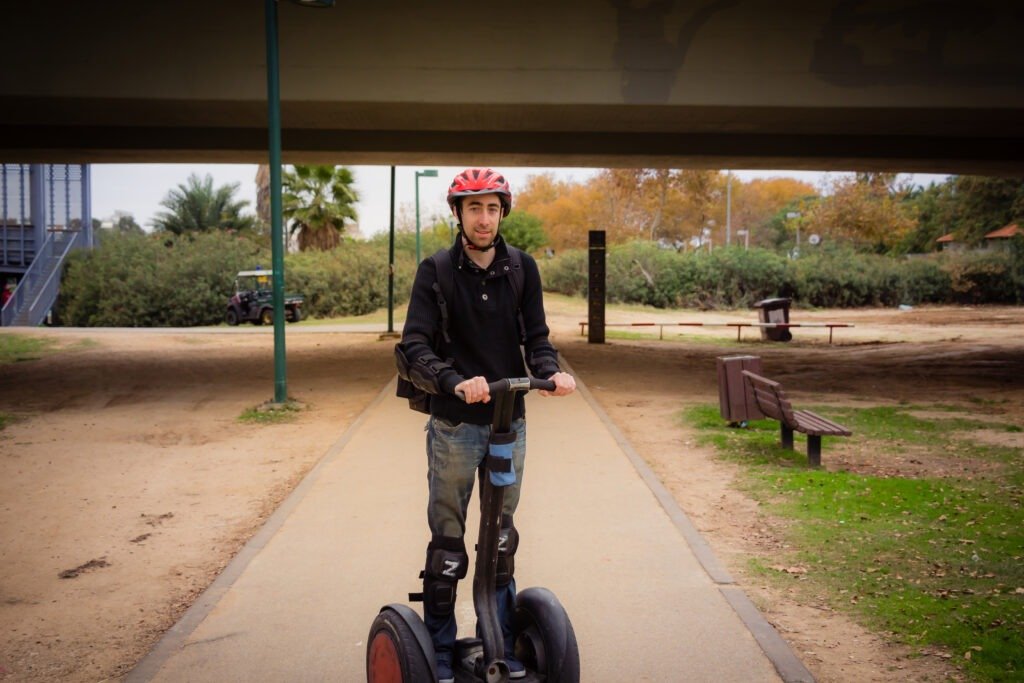
What Features Make a Hoverboard Worth the Investment?
Beyond basic safety and performance, many hoverboards come with features that enhance convenience, entertainment, and rider experience.
Bluetooth Capabilities and Built-In Speakers
Some boards allow you to sync with your phone and play music while riding. Built-in speakers can turn your hoverboard into a mobile party machine — great for teens and casual riders.
LED Lights and Additional Features
boards with multi-color LED lights are not just flashy; they also improve visibility at night. Other premium features may include:
- Mobile app control for speed adjustments
- GPS tracking
- Customizable lighting
While these features aren’t essential, they add fun and functionality.
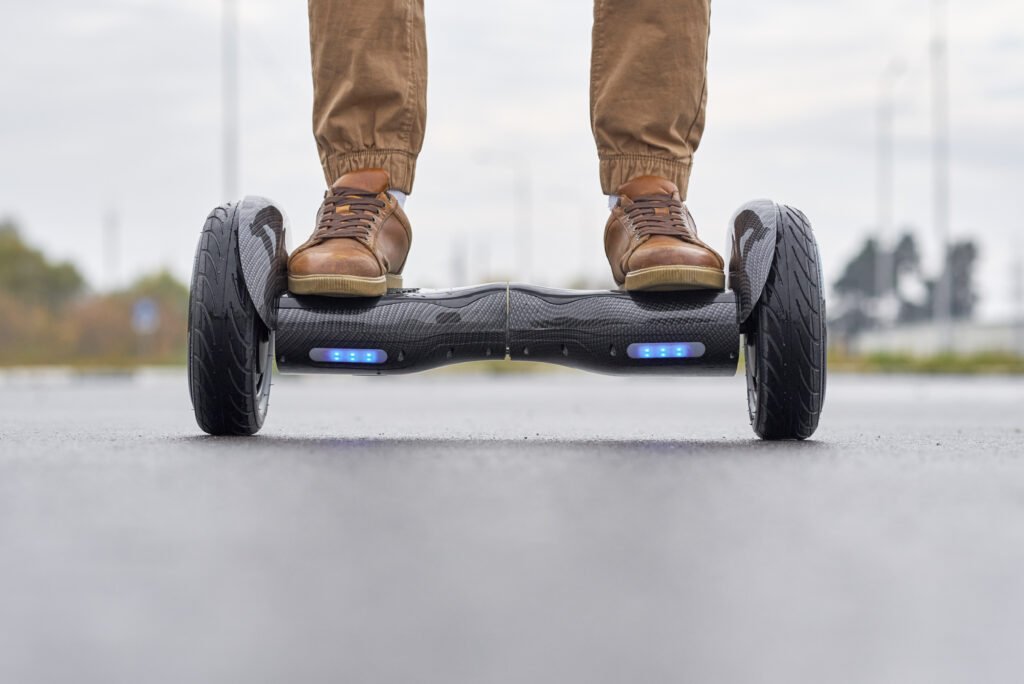
Wheel Size and Terrain Adaptability
Wheel sizes generally range from 6.5” to 10.5”. Larger wheels offer better handling on uneven surfaces, while smaller ones are ideal for smooth floors and pavements.
Choose based on your terrain:
- 6.5”: Lightweight and good for kids
- 8.5”: Versatile and ideal for mixed terrain
- 10.5”: Best for off-road or rough surfaces
How Do I Match a Hoverboard to My Specific Terrain Needs?
Not all hoverboards perform well in all environments. Matching your ride to your route is key to comfort and longevity.
Choosing Wheel Size Based on Commute and Terrain
Urban users may benefit from compact models with smaller wheels for easy portability and tight turns. Suburban or rural riders might prefer larger wheels for tackling bumps and sidewalk cracks.
Your daily route should dictate your wheel choice.
Off-Road Capabilities and What to Look for in Models
For trails, parks, or dirt paths, prioritize:
- Larger rubber tires
- Water resistance
- Higher clearance
- Dual motors for improved torque
All-terrain hoverboards typically feature treaded tires and powerful engines. Check user reviews on real off-road performance before buying.
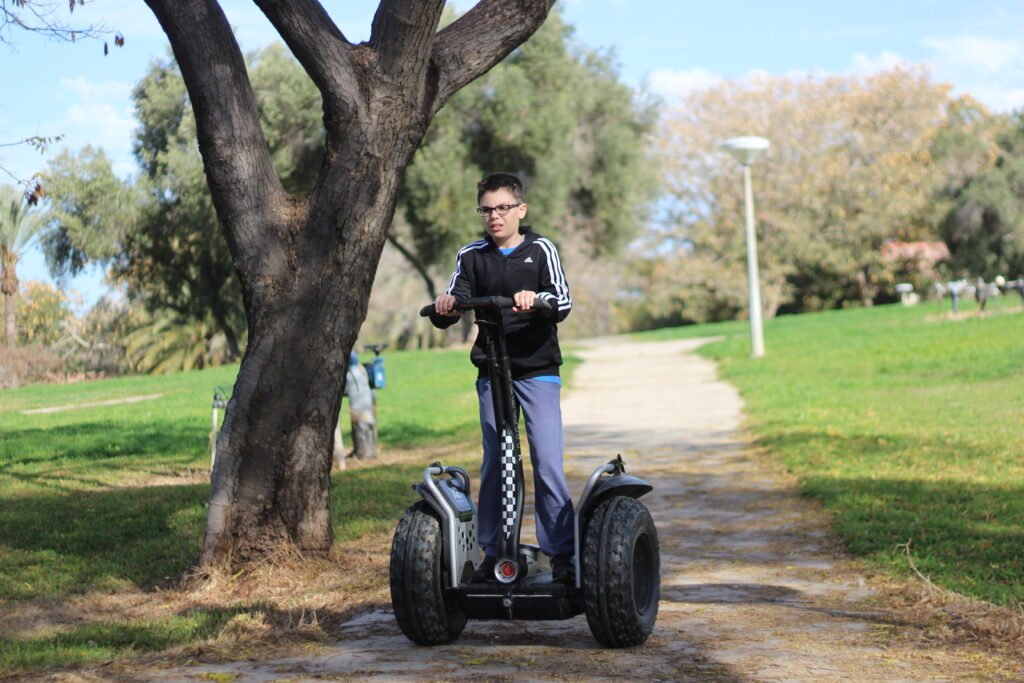
What’s the Best Way to Compare Hoverboard Models Before Purchasing?
With so many brands and models available, making a comparison can feel overwhelming. Here’s how to make an informed choice.
Comparing Hoverboard Specifications and Performance
Make a spreadsheet (or use comparison tools online) with key specs:
- Top speed
- Max range
- Charging time
- Weight capacity
- Wheel size
- Safety certifications
This helps you identify which models offer the best value for your needs.
Reading Reviews and Testing Before Buying a Hoverboard
Check reviews from verified users on platforms like Amazon, BestBuy, or Reddit. Pay attention to:
- Battery consistency
- Customer service experience
- Durability over time
If possible, test ride a hoverboard at a local store or rental shop before committing.
Price vs. Value: Finding the Perfect Balance
While premium hoverboards can cost over $500, many mid-range models between $200–$400 offer excellent value. Be wary of anything below $150, as these often cut corners on safety and performance.
Always balance your budget with key features and safety standards.
Final Thoughts: Choosing the Ideal Hoverboard That Fits Your Life
Hoverboards aren’t just toys — they’re modern personal vehicles that require thoughtful selection. Whether you’re buying for a child, looking to commute short distances, or simply want to glide around for fun, the right hoverboard depends on your goals, ground, and safety priorities.
Keep this guide in mind while shopping and take your time comparing models. A well-chosen hoverboard will reward you with fun, convenience, and safe riding for years to come.
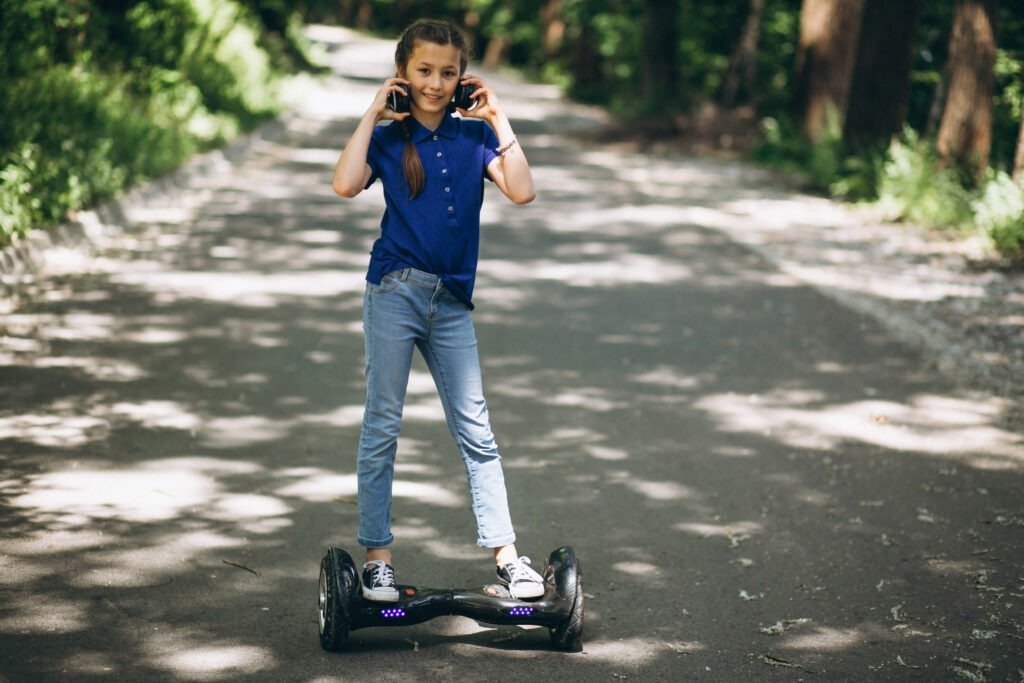
Learn More About Hoverboard Safety and Smart Riding
- Want to ride safer? Don’t miss our guide: Safety Tips Section
- Check out this guide from Salem Sound Coastwatch, which covers key precautions to take before every ride.
Frequently Asked Questions About Choosing and Using a Hoverboard
Choosing the right hoverboard involves considering several important factors. First, think about how you plan to use the hoverboard — whether as a mode of transportation for short commutes or just for fun. Next, look for models that match your weight and skill level. Make sure to choose a hoverboard with a powerful motor if you want faster speeds or to handle hills easily. Selecting the perfect one ensures you have a safe and enjoyable ride.
When purchasing a hoverboard, it’s essential to look for models that offer good battery life, durable build quality, and safety certifications. Also, consider the size of the wheels — larger wheels are better for rough surface. Features like LED lights and Bluetooth speakers can add to the fun but are secondary to safety and reliability. Be sure to make an informed decision by reading reviews and comparing different hoverboard models.
A powerful motor helps your hoverboard climb inclines and carry heavier riders more effectively. If you plan on using your hoverboard in varied terrains or for longer distances, a higher motor power ensures better performance. Many all-terrain hoverboards come equipped with motors designed for versatility, making them the best suited for your needs.
Yes! Many people use hoverboards as a fun and versatile hoverboard option for short commutes or getting around campus or neighborhoods. However, when using the hoverboard for commutes, it’s important to pick a model that meets safety standards and has enough battery life for your route.
To ensure the hoverboard you choose is safe, check for UL safety certifications — these guarantee the hoverboard has passed rigorous electrical and fire safety tests. Also, look for features like non-slip foot pads and a sturdy build. A well-made hoverboard should be made to handle regular use without issues.
Hoverboards designed for kids usually have lower top speeds and smaller wheels to provide more control and safety. Adult hoverboards tend to be more powerful and durable to support higher weight limits. When looking for a hoverboard, choose one that fits the rider’s age, size, and skill level.
Choosing the right hoverboard for your terrain depends on the size of the wheels and the motor power. Smaller wheels are fine for smooth, flat surfaces, while all-terrain hoverboards with larger, rugged wheels are ideal for grass, dirt paths, and uneven ground. Always look for models that offer the right features for your environment.
Yes, there are many hoverboard brands on the market, each offering various features and price points. It helps to read reviews and compare specs to find the comprehensive hoverboard that matches your needs. Brands that emphasize safety and quality often provide better long-term value.
Regularly check for any issues with your hoverboard, such as battery health, tire wear, and proper calibration. Keeping your hoverboard in good condition helps it last longer and ensures safe rides. If your hoverboard has replaceable parts, be sure to use manufacturer-approved components.
